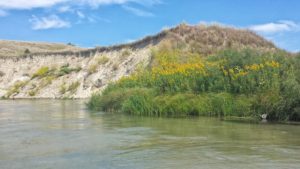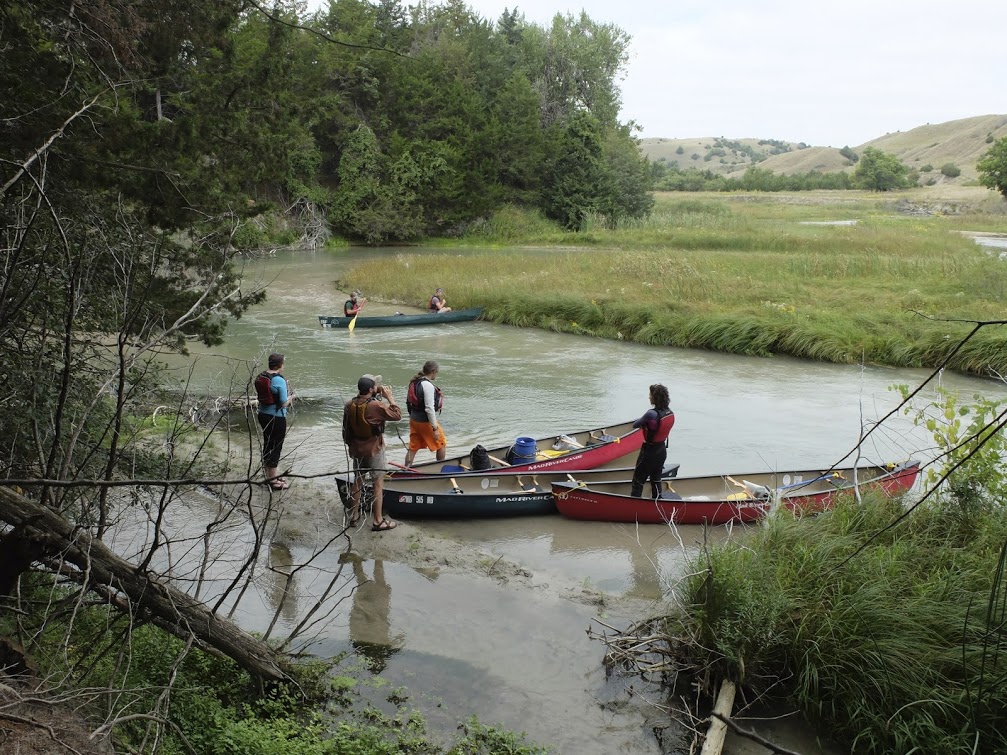The Dismal Retreat
By Matt Whitaker, English PhD student, Center for Great Plains Studies Graduate Fellow, University of Nebraska-Lincoln
Over Labor Day weekend, as part of the Center for Great Plains Studies’ Graduate Fellows retreat, myself and four other fellows spent three days camping and canoeing along the spring-fed waters of the Dismal River – a crooked, narrow stream that courses 71 miles through the heart of the Nebraska Sandhills.
On the second day, we stopped to swim in one of the many springs. The water was a clear, lucid blue. It pooled around our ankles, boiling up from the Ogallala Aquifer hundreds of feet below. Taking a step into one of these springs, the sandy bottom seemed to disappear beneath your feet, breaking apart until suddenly, without warning, you were up to your shins, then your knees, then your chest – sucked down into a thick sludge of silt and spring water. Quicksand, we called it.
 The experience of being an ecotourist in the Great Plains – of driving into the deep folds of the Nebraska Sandhills – felt much like quicksand. It was like being pulled under, or into, another world – a world that is both familiar and strange, new and ancient. As an interdisciplinary group of scholars, we approached this region from our own interests and values, hashing out ideas by the glow of firelight, conversing in the academic speak of theory and research, imagining the possibilities for how we might situate this landscape in the center of our intellectual milieu.
The experience of being an ecotourist in the Great Plains – of driving into the deep folds of the Nebraska Sandhills – felt much like quicksand. It was like being pulled under, or into, another world – a world that is both familiar and strange, new and ancient. As an interdisciplinary group of scholars, we approached this region from our own interests and values, hashing out ideas by the glow of firelight, conversing in the academic speak of theory and research, imagining the possibilities for how we might situate this landscape in the center of our intellectual milieu.
Thankfully, though, our learning was not abstract; it came through direct, unmediated contact with the environment. Robert Macfarlane, a writer of the British Isles, says that waterways, like the Dismal, are “not only means of traversing space, but [are] also ways of feeling, being, and knowing.” These lessons were brought to bear in the shape of an osprey’s outstretched wings, in the sound of a white-tailed deer splashing across the river, in the texture of the rough red cedar trees lining the banks of the Dismal. Returning home – our skin grimy, our hair smelling of campfire smoke – we carry with us the details and impressions that defined the experience, not as an endpoint, not as a conclusion to the narrative, but as an opening into new lines of inquiry for understanding the natural, historical, and sociocultural importance of the Great Plains region.

